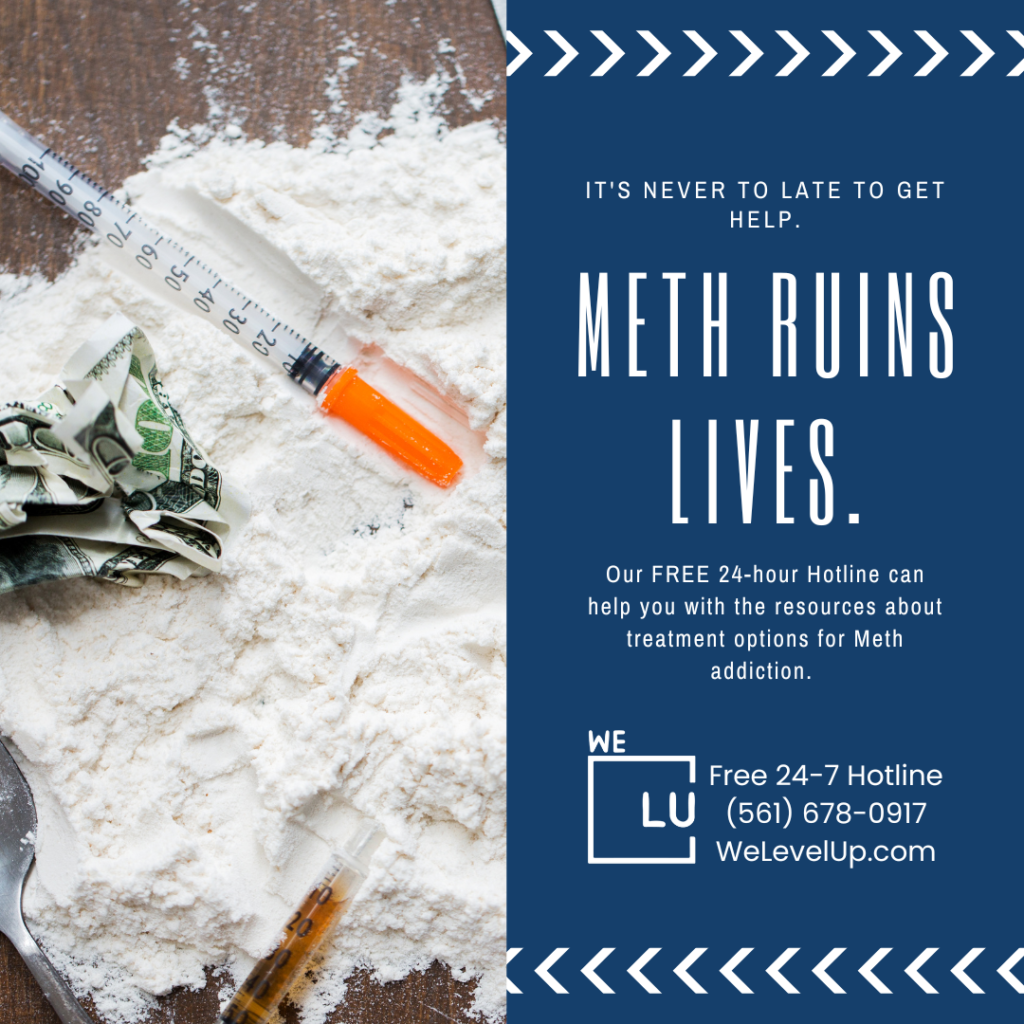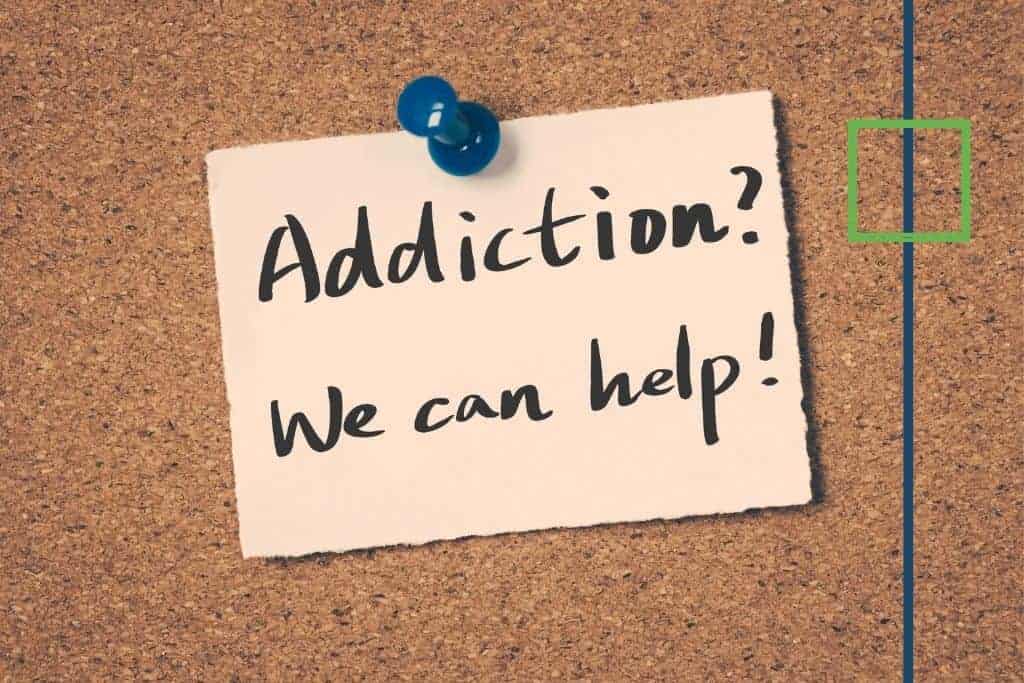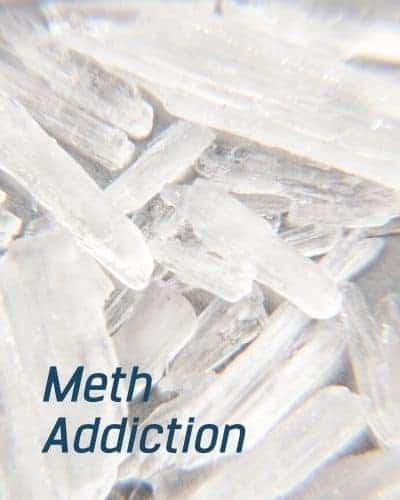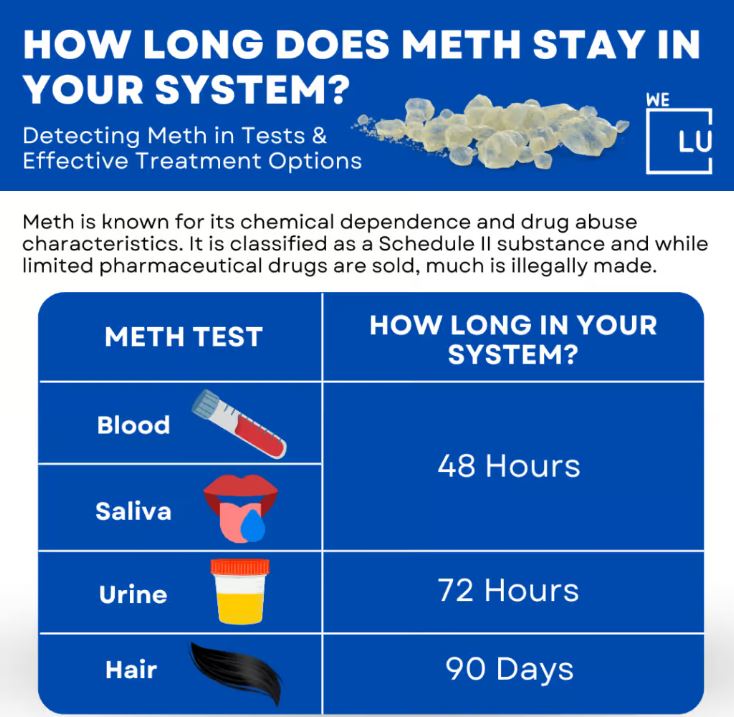How Long Does Meth Stay In Your Urine?
Methamphetamine, commonly known as meth, is a potent and highly addictive central nervous system stimulant that poses severe health risks to individuals who misuse it. One of the primary methods for detecting methamphetamine use is through urine testing.
Because the metabolites are removed through urine, a urine test typically reveals a more significant concentration of methamphetamine than other testing methods. Meth is broken down by the liver and eliminated through urine by the kidneys.
The duration for which meth stays detectable in urine depends on several factors, including the following:
- Frequency and amount of drug use.
- Individual’s metabolism.
- Sensitivity of the testing method.
How long is meth in your urine? Typically, meth can be detected in urine for up to 1-3 days after use, but in chronic users or heavy abusers, this detection window may extend to 5-7 days or more. Understanding the presence of meth in urine is crucial for various purposes, including drug screenings, addiction treatment assessments, and overall public health monitoring.
How To Pass A Urine Test For Meth?
The best and most responsible way to pass a urine test for meth is to abstain from using the drug entirely. Methamphetamine can have severe consequences for your health and well-being, so seeking professional help if you or someone you care about is struggling with meth abuse is essential.
If you are facing a drug test and have concerns about the results, it’s essential, to be honest and open with the relevant parties involved. Attempting to manipulate meth in urine tests can have severe legal and personal consequences.
Instead, consider contacting support groups, addiction counselors, or medical professionals who can assist and guide you in overcoming drug dependency. Remember, seeking help and recovery is a sign of strength, and resources are available to support individuals in their journey toward a healthier, productive, and drug-free life.
How Long Is Meth Detectable In Urine?
How long does meth show in urine? The detection of methamphetamine (meth) in urine is based on the drug’s metabolism and excretion process. When meth is ingested, it undergoes several metabolic pathways in the body. The primary metabolic pathway involves hepatic metabolism in the liver, which metabolizes the drug into amphetamine and other metabolites. These metabolites are then excreted through the kidneys into the urine.
The primary metabolite of methamphetamine, commonly tested in urine drug screenings, is amphetamine. Amphetamine and its metabolites are typically water-soluble, allowing them to be filtered by the kidneys and excreted in the urine.
How long is meth in urine? On average, methamphetamine and its metabolites can be detected in urine approximately 24-72 hours after use. However, the detection window can sometimes extend to 5-7 days or even longer in chronic or heavy users.
Drug testing methods and sensitivity can also impact the detection window. Susceptible tests may detect the presence of meth and its metabolites at lower concentrations, extending the detection time.

Skip To:
Learn More:
- How Long Do Crystal Meth Stay In Your System?
- How Long Does Meth Stay In Your System? Meth Drug Test Detection. Crystal Meth Half-life & Treatment. How Long Does Crystal Meth Stay In Your System?
- How Long Does A Meth High Last? Effects Of Meth Addiction
- How Long Does Meth Stay In Your Blood?
- What Does Meth Feel Like? What Does A Meth High Feel Like? Crystal Meth Effects & Long-Term Risks.
- What Does Crystal Meth Look Like vs What Does Meth Look Like vs What Does Methamphetamines Look Like? Identify Meth Look by Forms, Color, Powder Vs Liquid.
- Meth Withdrawal Symptoms, Timeline, Detox & Treatment
- Meth Symptoms Of Addiction, Side Effects, and Withdrawal
- Methamphetamine Detox, Symptoms, & Treatment
- How To Pass Drug Test? Top Rated Detox Program For Withdrawal Symptoms
Standard cutoff levels are often used to determine a positive result for legal or employment-related urine drug tests. These cutoffs are designed to minimize the possibility of false positives due to passive exposure to methamphetamine or its metabolites.
How to pass urine test for meth? The duration of methamphetamine detection in urine varies based on individual factors and testing methodologies. It is always best to refrain from using drugs altogether to avoid potential legal and health consequences. Professional help and support are highly recommended for recovery and a healthier life for someone struggling with meth abuse.
Urine Meth Test Fact Sheet
Understanding Meth Half Life
The half-life of a drug refers to the time it takes for the concentration of the drug in the body to reduce by half.
How long meth stay in urine? Methamphetamine has a relatively short half-life, which means it is rapidly metabolized and eliminated from the body. The half-life of methamphetamine is determined by the individual’s metabolism and the route of administration. On average, the half-life of methamphetamine ranges from 10 to 12 hours.
How long does meth last in urine? Here’s a scientific explanation of how the half-life of methamphetamine works:
- Absorption: After ingesting methamphetamine, it is absorbed into the bloodstream from the gastrointestinal tract (if taken orally) or the respiratory system (if smoked or inhaled) and reaches the brain and other tissues.
- Distribution: Methamphetamine, including the central nervous system (CNS), rapidly distributes throughout the body. The drug’s psychoactive effects are primarily attributed to its action on the CNS, increasing the release and blocking the reuptake of neurotransmitters like dopamine, norepinephrine, and serotonin.
- Metabolism: In the liver, methamphetamine undergoes metabolism through various enzymatic pathways. The primary metabolic route involves hepatic cytochrome P450 enzymes, converting methamphetamine into amphetamine, its primary active metabolite. Other metabolites are also formed during this process.
- Elimination: The elimination of methamphetamine and its metabolites mainly occurs through the kidneys, which are filtered into the urine. From there, they are excreted out of the body. Some metabolites may also be eliminated in the feces.
The rapid metabolism and elimination of methamphetamine give it a short half-life. As mentioned earlier, the average half-life is around 10 to 12 hours. This means that if someone ingests 100 mg of methamphetamine, after 10 to 12 hours, approximately 50 mg of the drug will remain in their system. After another 10 to 12 hours, half of the remaining 50 mg will be eliminated, leaving about 25 mg, and so on.
While the half-life of methamphetamine determines its duration of action and initial elimination, the drug and its metabolites can still be detected in urine for a more extended period, as mentioned in previous responses, due to their cumulative excretion over time.
How To Get Meth Out Of Urine?
The most effective and reliable way to get methamphetamine out of urine is to stop using the drug entirely and allow the body’s natural detoxification process to occur. If you or someone you’re concerned with is struggling with meth use or substance abuse, seeking professional help and support is highly recommended. Substance abuse treatment programs, counseling, and support groups can provide the necessary resources and guidance for recovery and a healthier life.

Meth is a highly habit-forming stimulant that can lead to substance use disorder even after just one use. The drug’s dopamine rush mainly causes this. Dopamine is a neurotransmitter that affects motivation, learning, memory retention, and reward processing and makes us feel good.
Meth produces a dopamine rush significantly more than the amount naturally created in the brain, leading users to keep using the substance to maintain elevated and happy feelings.
For many meth users, the drug is used over many days when they always remain euphoric. This frequently results in the development of tolerance; after using methamphetamine repeatedly, a person will need ever greater doses to have the same effects as previously. Due to the stimulant effects and low cost of the substance, addiction can develop quickly.
When trying to stop using meth, it may become challenging to feel cheerful, and when it wears off, withdrawal symptoms, including anxiety, sleeplessness, lethargy, and sadness, may appear. Meth withdrawal’s crippling effects reinforce abusive behavior and increase the chance of bingeing. If a person’s reward system becomes reliant on the substance, their fear of withdrawal and meth cravings can completely take over their lives.

Get Your Life Back
Find Hope & Recovery. Get Safe Comfortable Detox, Addiction Rehab & Dual Diagnosis High-Quality Care.
Hotline(844) 597-1011Meth Recovery Statistics
Meth has relapse rates similar to those of other chronic disorders like hypertension as a regular, recurrent mental condition. For the first year of rehabilitation, the recovery rate for meth is between 40 and 60 percent. Even though the recovery rate may appear low, meth addiction is chronic and relapsing, and it may take numerous treatment attempts before the condition is finally controlled.
1.9 Million
In 2019, roughly 1.9 million individuals aged 12 or older reported using meth drugs in the past year.
Source: NSDUH
103,000
Meth-related visits to hospital emergency departments increased from 68,000 in 2009 to 103,000 in 2019.
Source: SAMHSA
15%
Methamphetamine is a significant reason for substance abuse treatment admissions, with approximately 15% of all admissions related to methamphetamine abuse.
Source: NCBI

How Long Does Crystal Meth Stay In Urine?
Methamphetamine and crystal meth (methamphetamine in its crystalline form) have the same chemical composition, so they generally share similar pharmacokinetic properties, including a comparable half-life. Both substances typically have a half-life of around 10 to 12 hours, meaning it takes approximately half of the drug’s concentration to be eliminated from the body.
The time it takes for crystal meth to become undetectable in urine depends on several factors, including:
- Dose and Frequency of Use: Higher doses and more frequent meth use can accumulate the drug and its metabolites in the body, extending the detection window.
- Individual Metabolism: Each person’s metabolism is unique, and some individuals may process and eliminate meth faster or slower than others.
- Urinary pH: The urine’s acidity or alkalinity can influence meth excretion. More acidic urine may lead to faster drug elimination, while alkaline urine may delay detection.
How long can meth be detected in urine? An individual in good general health can get rid of crystal meth more quickly than someone less healthy. A younger individual can metabolize the drug out of their system faster than an older person because they typically have a greater metabolism rate.
Get Help. Get Better. Get Your Life Back.
Searching for Accredited Drug and Alcohol Rehab Centers Near You?
Even if you have failed previously and relapsed, or are in the middle of a difficult crisis, we stand ready to support you. Our trusted behavioral health specialists will not give up on you. When you feel ready or just want someone to speak to about therapy alternatives to change your life call us. Even if we cannot assist you, we will lead you to wherever you can get support. There is no obligation. Call our hotline today.
(844) 597-1011Extracting Meth From Urine Explained
Some people attempt to extract meth from urine, but it is not a viable or safe process. The urine contains metabolites and waste products, and any attempts to extract methamphetamine from it could result in unsafe and toxic substances. Moreover, using or possessing methamphetamine is illegal and can have severe legal and health consequences.
Moreover, tampering with drug tests is generally illegal. Drug tests are conducted to ensure public safety, maintain workplace standards, and detect substance abuse. Attempting to cheat a drug test can lead to severe consequences, including legal penalties and loss of opportunities.
Meth addiction is a severe health issue, and resources are available to assist individuals in overcoming substance abuse and starting a path to recovery. Substance abuse treatment programs, counseling, and support groups can provide the necessary help and guidance for a healthier, drug-free life.
First-class Facilities & Amenities
World-class High-Quality Addiction & Mental Health Rehabilitation Treatment
Rehab Centers TourRenowned Addiction Centers. Serene Private Facilities. Inpatient rehab programs vary.
Addiction Helpline(844) 597-1011Proven recovery success experience, backed by a Team w/ History of:
15+
Years of Unified Experience
100s
5-Star Reviews Across Our Centers
10K
Recovery Success Stories Across Our Network
- Low Patient to Therapist Ratio
- Onsite Medical Detox Center
- Comprehensive Dual-Diagnosis Treatment
- Complimentary Family & Alumni Programs
- Coaching, Recovery & Personal Development Events
Getting Help For Meth Addiction & Passing Urine Test For Meth
How to pass a urine drug test for meth? Regarding passing a urine drug test, the most reliable way is to abstain from using methamphetamine entirely. How long does meth stay in urine? If you are genuinely concerned about a drug test due to past methamphetamine use, being honest about your situation with the relevant parties may be the best course of action. Seeking treatment and commitment to recovery can demonstrate a proactive approach to overcoming addiction.
Remember, overcoming methamphetamine addiction is challenging, but with the proper support and determination, it is possible to regain control of your life and pass urine test meth (drug use assessment). If you’re uncertain where to start, consider contacting the We Level Up addiction treatment specialists, who can guide you toward appropriate resources and treatment options.
World-class, Accredited, 5-Star Reviewed, Effective Addiction & Mental Health Programs. Complete Behavioral Health Inpatient Rehab, Detox plus Co-occuring Disorders Therapy.
CALL(844) 597-1011End the Addiction Pain. End the Emotional Rollercoaster. Get Your Life Back. Start Drug, Alcohol & Dual Diagnosis Mental Health Treatment Now. Get Free No-obligation Guidance by Substance Abuse Specialists Who Understand Addiction & Mental Health Recovery & Know How to Help.
Top 5 How Long Does Meth Show Up In Urine? FAQs
-
How long does meth stay in the urine?
Methamphetamine can typically be detected in urine for up to 1-4 days after use, based on the individual’s metabolism, frequency of use, and the amount taken. In chronic users or heavy abusers, it may be detectable for slightly more extended periods.
-
How to pass a meth urine test?
Attempting to cheat or manipulate passing a urine test for meth is illegal in many places. The best way to pass meth urine tests is to refrain from using the drug altogether. If you or someone you care about is struggling with substance abuse, seeking professional help and support is highly recommended.
-
How long does crystal meth stay in your urine?
Crystal meth can typically be detected in urine 1-4 days after use. However, in chronic or heavy users, it may be detectable for slightly more extended periods, up to 5-7 days, or even more in some cases.
-
How to get meth out of your urine?
The only safe and reliable way to get meth out of your urine is to stop using the drug completely. Methamphetamine is eliminated from the body over time, and the best approach is to allow the body’s natural detoxification process to occur by abstaining from further drug use.
-
How long is meth detected in urine?
Methamphetamine can be detected in urine for up to 24-100 hours after use, depending on various factors such as the individual’s metabolism, frequency of use, and the amount taken. Detection times may extend in chronic or heavy users.
Faces Of Meth Before & After Images Devastating Effects w/ Meth Face, Meth Mouth, & Meth Sores
In the long run, methamphetamine can devastate the individual’s physical and mental health, leading to severe damage to organs, teeth, skin, and cognitive function and also causing addiction and potentially long-term psychological issues.
How long does meth stay in urine? The frequency of usage, dose size, metabolic rate, age, general health of the user, body mass, level of physical activity, drug tolerance, and pH of the urine are just a few of the variables that affect how long a drug is detectable in the urine. How much and how often a drug is used significantly impacts how long it takes for someone to metabolize it out of their system.
If you or a loved one is struggling with meth addiction or other substance use disorder(s), call for a FREE consultation 24/7 at (561) 678-0917
Get FREE meth addiction treatment insurance check – https://welevelup.com/rehab-insurance/
Faces of Meth Before & After Images Video Transcript.
The “Faces of Meth” project was first introduced by the Multnomah County Sheriff’s Office in Portland, Oregon, in 2004. The idea behind the project was to educate the public, particularly young people, about the dangers of methamphetamine use and its potential consequences.
The photos used in the project are often shocking, as they depict individuals who have lost teeth, aged prematurely, and suffered from severe skin problems due to their drug use. Methamphetamine is a highly addictive drug that can cause many physical and mental health problems, including heart problems, increased risk of stroke, paranoia, and hallucinations.
The “Faces of Meth” project has successfully generated widespread attention and raised awareness about the harmful effects of methamphetamine use. The campaign has also been adopted by other law enforcement agencies and organizations across the country and around the world.
In addition to the images, the “Faces of Meth” campaign also features resources and information for those struggling with methamphetamine and other drug addiction, including treatment options and support groups. The project’s ultimate goal is to help prevent and reduce the harm caused by methamphetamine abuse and encourage people to seek help if they or someone they know is struggling with addiction.
Experience Transformative Recovery at We Level Up Treatment Centers.
See our authentic success stories. Get inspired. Get the help you deserve.
Start a New Life
Begin with a free call to an addiction & behavioral health treatment advisor. Learn more about our dual-diagnosis programs. The We Level Up Treatment Center Network delivers recovery programs that vary by each treatment facility. Call to learn more.
- Personalized Care
- Caring Accountable Staff
- World-class Amenities
- Licensed & Accredited
- Renowned w/ 100s 5-Star Reviews
We’ll Call You
Search We Level Up How Long Does Meth Stay In Your Urine? Meth Topics & Resources
Sources
[1] Yasaei R, Saadabadi A. Methamphetamine. [Updated 2022 May 8]. In: StatPearls [Internet]. Treasure Island (FL): StatPearls Publishing; 2023 Jan-. How Long Does Meth Stay In Your Urine? Related Topic. Available from: https://www.ncbi.nlm.nih.gov/books/NBK535356/
[2] Karila L, Weinstein A, Aubin HJ, Benyamina A, Reynaud M, Batki SL. Pharmacological approaches to methamphetamine dependence: a focused review. Br J Clin Pharmacol. 2010 Jun;69(6):578-92. DOI: 10.1111/j.1365-2125.2010.03639.x. PMID: 20565449; PMCID: PMC2883750.
[3] Campillo R. My Experience and Recovery from Meth Addiction. Mo Med. 2022 Nov-Dec;119(6):500. PMID: 36588652; PMCID: PMC9762226. How Long Does Meth Stay In Your Urine? Related Topic.
[4] National Highway Traffic Safety Administration – April 2014 (Revised) Drugs and Human Performance Fact Sheets. How Long Does Meth Stay In Your Urine? Related Topic.
[5] We Level Up New Jersey – Rehab » Meth Addiction Treatment. How Long Does Meth Stay In Your Urine? Related Topic.
[6] How Long Does Meth Stay In Your System? Meth Drug Test Factors, Crystal Meth Half-life & Treatment – We Level Up Addiction Treatment Center. How Long Does Meth Stay In Your Urine? Related Topic.
[7] National Survey on Drug Use and Health (NSDUH) – Substance Abuse and Mental Health Services Administration. How Long Does Meth Stay In Your Urine? Related Topic.
[8] McKay JR. Impact of Continuing Care on Recovery From Substance Use Disorder. Alcohol Res. 2021 Jan 21;41(1):01. DOI: 10.35946 PMID: 33500871; PMCID: PMC7813220. How Long Does Meth Stay In Your Urine? Related Topic.
[9] Fluyau D, Charlton TE. Drug Addiction. [Updated 2022 Aug 29]. In: StatPearls [Internet]. Treasure Island (FL): StatPearls Publishing; 2022 Jan-. How Long Does Meth Stay In Your Urine? Related Topic. Available from: https://www.ncbi.nlm.nih.gov/books/NBK549783/
[10] Justinova Z, Panlilio LV, Goldberg SR. Drug addiction. Curr Top Behav Neurosci. 2009;1:309-46. DOI: 10.1007/978-3-540-88955-7_13. PMID: 21104390; PMCID: PMC3039293. How Long Does Meth Stay In Your Urine? Related Topic.



